
Vygruppen, branded as Vy, formerly the Norwegian State Railways, branded as NSB, is a government-owned railway company which operates most passenger train services and many bus services in Norway. The company is owned by the Norwegian Ministry of Transport. Its sub-brands include Vy Buss coach services, CargoNet freight trains and the Swedish train transport company Tågkompaniet. In 2009, NSB carried 52 million train passengers and 104 million bus passengers. On 24 April 2019, passenger train and bus services were rebranded as Vy.

The Talent is a multiple unit railcar manufactured by Bombardier that was developed by Waggonfabrik Talbot in Aachen shortly before the company was acquired by Bombardier in 1995. The name Talent is an acronym in German for TALbot LEichter Nahverkehrs-Triebwagen.
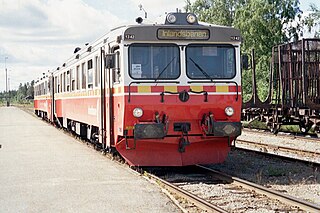
The Inland Line is a 1,288-kilometre (800 mi) railway line between Kristinehamn and Gällivare in Sweden. It runs through the central parts of northern Sweden, and was built between 1908 and 1937.

NSB Di 3 is a class of 35 diesel-electric locomotives built by NOHAB for the Norwegian State Railways (NSB). The class was built between 1954 and 1969, and delivered in two series, Di 3a and Di 3b. They are based on the Electro-Motive Division F7 and are equipped with EMD 567 engines. They have a distinct bulldog nose and were numbered 602–633 (a-series) and 641–643 (b-series). The locomotives had a prime mover that gives a power output of 1,305 kilowatts (1,750 hp). The a-series has a Co′Co′ wheel arrangement, while the b-series has (A1A)(A1A). The b-series has higher top speed, but lower tractive effort.
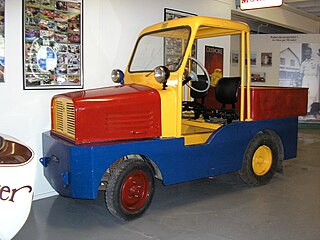
Kalmar Verkstad AB (KVAB) was a Swedish train and automobile manufacturer in Kalmar, Sweden that made the Tjorven and Terminal. KVAB was founded in 1902 and closed in 2005 by Bombardier.

NSB Di 2 was a class of 54 diesel-hydraulic locomotives operated by the Norwegian State Railways (NSB). Six units were built by Maschinenbau Kiel (MaK) of Kiel, Germany, and the remaining by Thune in Oslo. The locomotives were used for shunting and for local and light freight trains throughout NSBs network. Based on MaK's 575C design, the locomotives were 10.0 meters long and had a C wheel arrangement.

The State Railways Administration of Uruguay, or AFE, is the autonomous agency of the Oriental Republic of Uruguay charged with rail transport and the maintenance of Uruguayan railways.

The JŽ class 441 is an electric locomotive built for Yugoslav Railways. The units are now used by Hrvatske željeznice, Željeznice Federacije Bosne i Hercegovine, Željeznice Republike Srpske, Serbian Railways and Rail transport of TPP Nikola Tesla, Makedonski Železnici, Turkish State Railways and Romanian Railways-CFR.

Trainkos, is the national railway company of Kosovo. It was originally formed as the Kosovo Railways J.S.C UNMIK Railways from the lines of the former Yugoslav Railways that lie on Kosovar territory. In 2011, the company was split into two public companies called Trainkos and Infrakos, the latter responsible for rail maintenance.
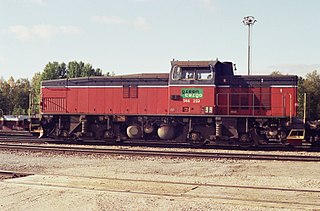
T44 is a Swedish diesel-electric locomotive built by Nydqvist & Holm (NOHAB) and Kalmar Verkstad (KVAB) in 123 units between 1968 and 1987. It was the successor of T43, and used both for hauling and shunting. It is the most common diesel locomotive in Sweden, with state-owned Green Cargo as the largest operator. Other operators include Israel Railways (one), Malmtrafik (two) and formerly Norwegian State Railways and Inlandsbanan AB.
NSB Class 87 is a class of 25 diesel-hydraulic railcars built by Strømmens Værksted for the Norwegian State Railways. Seventeen a-series units were delivered in 1941 and equipped with 93-kilowatt (125 hp) Deutz prime mover. Eight b-series units were delivered in 1952 and equipped with 110-kilowatt (150 hp) Scania-Vabis prime movers. The trains weighed 15 and 15.5 tonnes and had a maximum speed of 75 and 80 kilometres per hour, respectively for the a and b-series. They were used on many branch lines until the 1960s, when the gradual electrification caused most lines instead to be served with Class 86. The a-series was scrapped in 1972 and 1973, while the b-series remained used between Ål and Hønefoss on the Bergen Line until 1975 and on the Flekkefjord Line until 1981.
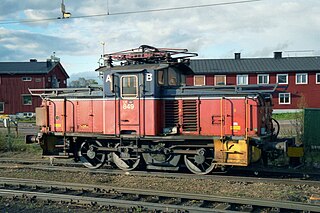
U is a class of 152 electric shunter locomotives operated by the Swedish State Railways and Trafikaktiebolaget Grängesberg–Oxelösunds Järnvägar (TGOJ) of Sweden, and the Norwegian State Railways (NSB), LKAB and Norsk Jernverk of Norway. They were built by ASEA, Nyqvist och Holm, Motala, ASJ Falun and Thune between 1926 and 1956. NSB gave the class the designation El 10.

Bombardier Itino is a diesel multiple unit manufactured by Bombardier Transportation, originally developed by Adtranz. It has two or three cars and is capable of 140–160 km/h (90–100 mph). A total of 57 units were manufactured at the former LEW Hennigsdorf factory between 2002 and 2010. It is in service in Germany and Sweden.
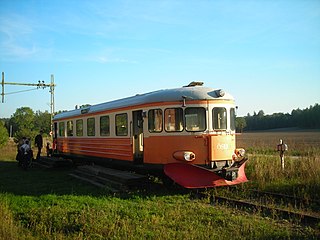
Y6 was a series of diesel railcars operated by Statens Järnvägar (SJ) of Sweden. 378 motor cars and 321 trailers were delivered between 1953-61 by Hägglund & Söner, Svenska Järnvägsverkstäderna, Kalmar Mekaniska Verkstad and Eksjöverken. They were used throughout the unelectrified Swedish rail network during the 1950s to the 1980s. The electrical counterpart of the unit was the X16 and X17.

Timetoget Bratsbergbanen AS, trading as Timetoget, is a defunct railway company that tried to start operating passenger trains on the Bratsberg Line in Norway. The concept was launched in 1998, and in 1999 an agreement was made with the incumbent, Norwegian State Railways (NSB), to start operation in 2000. The founders were Gjermund Jamtveit and Halvor Grene, while NSB owned a third of the company. The company bought three used Y1 railcars from Sweden.
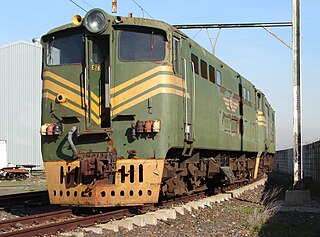
The South African Railways Class 5E, Series 3 of 1958 was an electric locomotive.
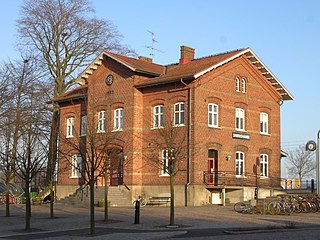
The Österlen Line is a 46-kilometer (29 mi) long railway line between Ystad and Simrishamn in Skåne County, Sweden. The line is the remains of two former lines, the Malmö–Simrishamn Line and the Ystad–Eslöv Line. The Österlen Line runs from Ystad Station, where it is a continuation of the Ystad Line. The line is single track and electrified. It is served by the Skåne Commuter Rail and freight trains.
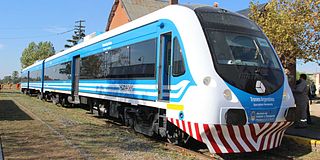
Materfer is an Argentine manufacturer of railway and road vehicles, located in the city of Ferreyra in Córdoba Province. The company was established by Fiat Concord in the late 1950s, being its subsidiary until 1980 when Sevel Argentina took over Fiat vehicles.

The 7131 was an Argentine diesel multiple unit class, first produced in Italy by Fiat Ferroviaria, then licensed to Argentine company Materfer to continue the manufacturing. Those railcars were introduced in the 1960s to replace the existing rolling stock of most of the urban services of Argentina, such as Roca, Urquiza, Mitre and Sarmiento lines.

Series 54, were diesel locomotives used by the National Railway Company of Belgium (NMBS/SNCB). Along with Series 52, 53 and 59, they were the first generation of Belgian diesel locomotives, built in the 1950s. All three types were ultimately derived from the earlier Series 52 locos, representing a faster version of the design, allowing for 140 km/h usage instead of 120 km/h.






























